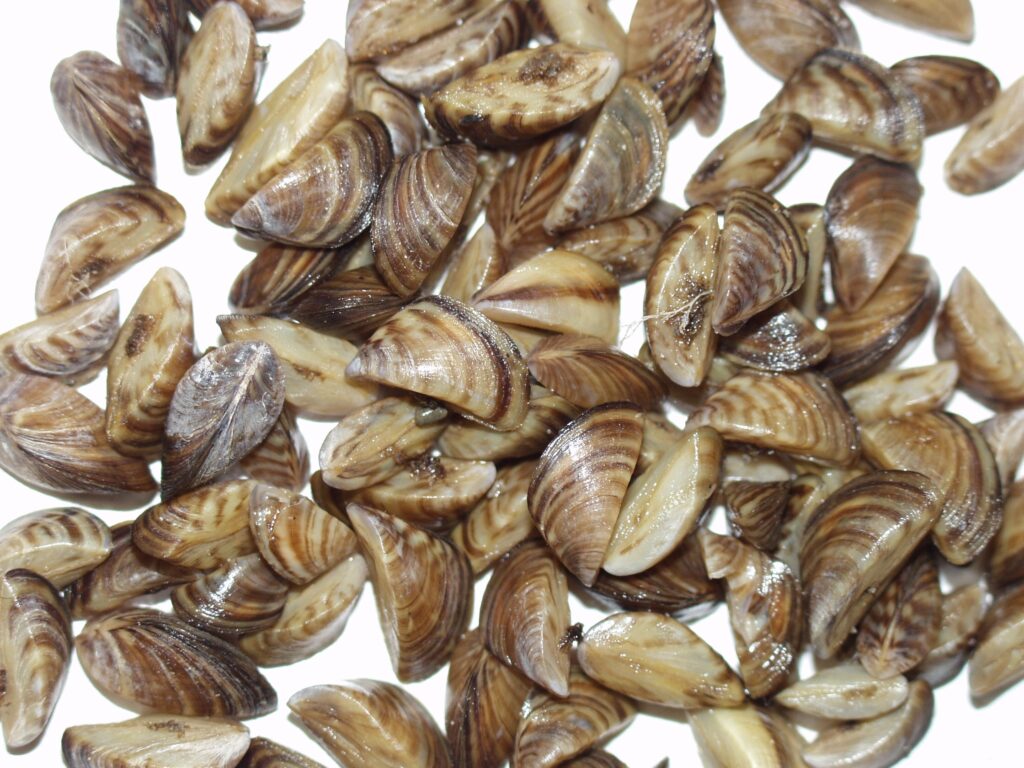
Seth Tupper/South Dakota Searchlight – A nonprofit is launching a study on the economic impact of the zebra mussel invasion in South Dakota and accusing state government of a lackluster response to the problem.
The South Dakota Lakes and Streams Association, based in Sioux Falls, said Monday it will spearhead a $107,000 study. It’s designed to provide legislators and other government leaders information to better protect the state’s lakes and rivers, the association said.
The state has been “throwing up its hands in capitulation,” according to association board member Deb Soholt, a former state senator.
“The state was not wanting to do this type of study,” she said in a news release.
Soholt said other states are doing more than South Dakota to stop zebra mussels from spreading.
“We believe it is important to conduct the needed research to understand the economic impact, so policymakers have the necessary information to do both containment and mitigation,” Soholt said.
It is critical we understand the economic impact, and we expect the study will show us South Dakota needs to take this much more seriously that it is now.
– Deb Soholt, South Dakota Lakes and Streams Association
In response, Nick Harrington, communications manager for the state Department of Game, Fish and Parks, said in an email to South Dakota Searchlight, “GFP has significantly enhanced efforts to slow the spread of aquatic invasive species (AIS) in recent years, both educating anglers and boaters to clean, drain, dry every time they are on the water as well as physically inspecting boats prior to and/or after loading.”
Last week, the department announced the detection of zebra mussels in Lake Oahe, one of the dams on the Missouri River and a major source of recreation, hydropower and water for the state.
According to the association, there are 22 lakes or rivers in South Dakota infested with zebra mussels, which were first detected in Lewis & Clark Lake in 2015.
Zebra mussels are invasive, fingernail-sized mollusks that probably arrived in the Great Lakes in the 1980s via ballast water that was discharged by large ships from Europe, according to the U.S. Geological Survey. The USGS says zebra mussels negatively impact ecosystems in many ways: They filter out algae that native species need for food, clog water intakes and attach to — and incapacitate — native mussels.
The South Dakota Lakes and Streams Association describes zebra mussels as “a major threat to irrigation, hydropower, recreational boating, fishing, tourism, water supplies and more.”
The association’s economic impact study is being conducted at the University of South Dakota in partnership with South Dakota State University. It’s funded by the association, East Dakota Water Development District, Lake Kampeska Water Project District, James River Water Development District, Vermillion Basin Water Development District and $12,000 of in-kind contributions from USD.
Assisting in the study is Nanette Nelson, a research economist with the University of Montana. Her 2019 Montana study predicted that if zebra mussels were to colonize all the water bodies in that state, they would cause up to $122 million in mitigation expenses, up to $112 million in lost revenue and up to $497 million in lost property value.
“It is critical we understand the economic impact,” Soholt said of the impending South Dakota study, “and we expect the study will show us South Dakota needs to take this much more seriously than it is now.”
Zebra mussel detections in South Dakota
- Lewis & Clark Lake, 2015
- Missouri River (below Gavins Point), 2016
- McCook Lake, 2016
- Lake Yankton, 2018
- Lake Sharpe, 2019
- Lake Francis Case, 2019
- Pickerel Lake, 2020
- Lake Cochrane, 2020
- Lake Kampeska, 2020
- Dahme Quarry, 2020
- Lake Mitchell, 2021
- Pactola Lake, 2022
- Enemy Swim Lake, 2022
- Blue Dog Lake, 2022
- South Rush Lake, 2022
- Clear Lake (Marshall County), 2022
- James River, 2023
- Sand Lake National Wildlife Refuge, 2023
- Roy Lake, 2023
- Big Sioux River, 2023
- Big Stone Lake, 2023
- Lake Oahe, 2023
— Sources: sdleastwanted.sd.gov, South Dakota Lakes & Streams Association
